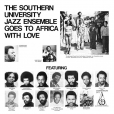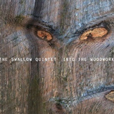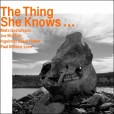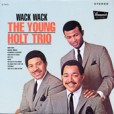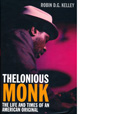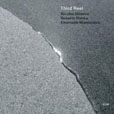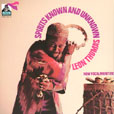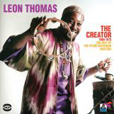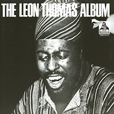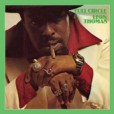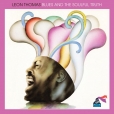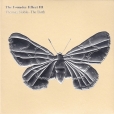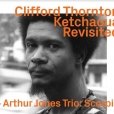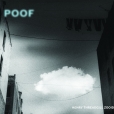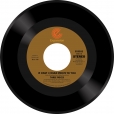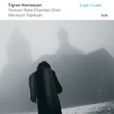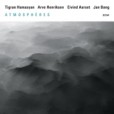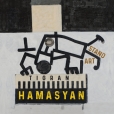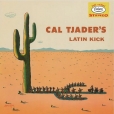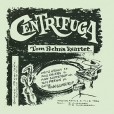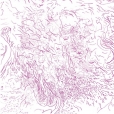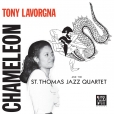Your basket is empty

The core trio joined by Joe McPhee, playing saxophone and pocket trumpet, in readings of compositions by Don Cherry, PJ Harvey, Ornette Coleman, McPhee himself, James Blood Ulmer and Frank Lowe.
Judging by the first few chapters, this is a tremendous biography, completely sussed — profound empathy, political nous, and a love of the music in door-stopping measure. Looking forward to it a lot.
Nicolas Masson (tenor saxophone, clarinet), Roberto Pianca (guitar), Emanuele Maniscalco (drums).
The singer’s 1969 debut under his own name — after a stint in Pharoah Sanders’ group — is his best album.
A beautiful, succinct version of Master Plan, a lovely Song For My Father, an angry Damn Nam. Malcolm’s Gone is a forgotten classic: intensely spiritual eastern sounds, with Pharoah Sanders at his most focussed.
Cecil McBee, James Spaulding, Roy Haynes, Lonnie Liston Smith, Richard Davis…
The CD offers three bonus tracks, including A Night In Tunisia, and a live version of Damn Nam (Ain’t Goin’ To Vietnam).
HIQLP and BGPCD from Ace.
Thornton’s BYG album Ketchaoua: the leader on cornet and percussion, with Grachan Moncur on trombone, Archie Shepp on soprano sax, Arthur Jones on alto, Bob Guerin and Earl Freeman on bass, Sunny Murray on drums, and Dave Burrell on piano.
Plus Arthur Jones’ own Scorpio album, also for BYG in 1969: an excellent, unsung set, new-thing but rooted, with shades of Ornette and ESP, Johnny Hodges and Sonny Rollins.
Sonatas or concerti, says Threadgill: Come and Go for saxophone and cello; Poof for saxophone and guitar; Beneath the Bottom for trombone; Happenstance for flute and drums; Now and Then for tuba and guitar.
‘By this point, the group’s reliance on the serial intervallic system that was the basis of the group’s unique sound is more felt than prescribed, relying on the musicians to fill in the rest.
‘All the other hallmarks are here: unpredictable forms, percolating rhythms, the interwoven melodic strains; there’s really nothing else remotely like it.
‘The best part of it all is that Zooid is the one platform where one still gets to hear Threadgill really play. His keening saxophone wail retains that unmistakable gutbucket blues feel, with no small measure of church thrown into the mix.’
From 1991, the debut, milestone release of this lineup featuring dual tubas and dual electric guitars.
Armenian sacred music from the fifth to nineteenth centuries — chants, hymns and sharakans — in settings for choir and piano.
‘Extraordinarily beautiful… Hamasyan uses the characteristic, Eastern-hued Armenian modes to summon up an ancient world. It’s very different to Jan Garbarek and the Hilliard Ensemble’s million-selling Officium, but if you like that, you’ll love this’ (The Independent).
The Armenian pianist in a quartet setting, meditating on ancient folk melodies (including a couple of compositions by Komitas), between jazz and ambient.
An album of American standards… by Richard Rodgers, Charlie Parker, Jerome Kern, and others… plus one improvisation. With bandmates Matt Brewer on bass, and drummer Justin Brown, and guests including Ambrose Akinmusire, Joshua Redman, and Mark Turner.
‘Hamasyan puts so much emphasis on mood and melody that it’s easy to miss how virtuosic the playing is’ (DownBeat).
‘Tigran has found a way to keep improvisation fresh and lyrical. Other jazz musicians would be wise to take note’ (Guardian).
‘There are many brilliant and perfectly finished young jazz pianists around, but Hamasyan stands out because he has something important and urgent to say’ (Daily Telegraph).
“I love these compositions and melodies so much that, to me, it’s like Armenian folk music. As an immigrant – an Armenian-American – I relate to these composers and musicians from various backgrounds who have that kind of history, a dark history, but managed to succeed in an embodiment of freedom. In that way, I feel like I want to be part of this, to find something in the tradition of where I came from.”
‘Arguably the rarest LP of European free jazz, recorded in 1963 for the Danish label Sonet, but not fully released. Impossibly uncommon, exceptionally wonderful music, featuring an extended tenor saxophone solo by Frits Krogh, influenced by Sonny Rollins, but strikingly his own man. The rhythm section is deep into non-metrical time, and comparisons to Cecil Taylor are valid, though Prehn’s playing favours chords and clusters over linear runs. For the CD, the two tracks of the original LP, mastered from both extant copies of the test master, are augmented by a single track from 1966, never before released.’
Legendary free jazz recordings from 1964 and 1965, with the Danish pianist alongside Fritz Krogh on tenor saxophone, Poul Ehlers on bass, and Finn Slumstrup on drums.
‘Close-miked percussive sax-pad treatments that swing like mad and give the music a VERY radical profile and color,’ writes Mats Gustafsson in his liner notes. ‘I have NEVER heard anything like it.’
A private press LP from early-eighties Youngstown, Ohio, featuring an absolutely killer Hammond B3 version of Chameleon, and an exceptionally funky The World Is A Ghetto, showcasing Lavorgna’s soulful saxophone, and more deep funk from David Thomas, on organ.
